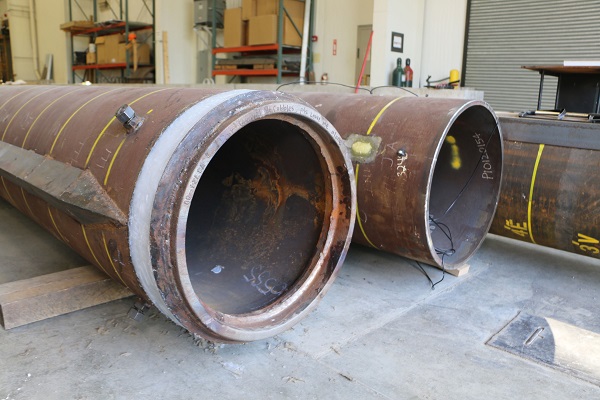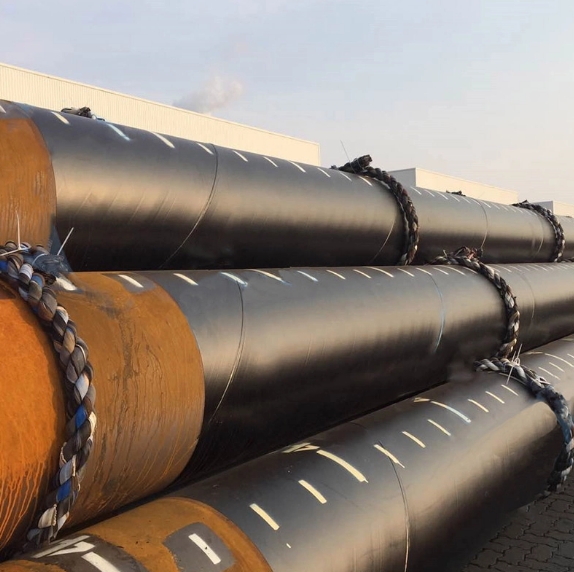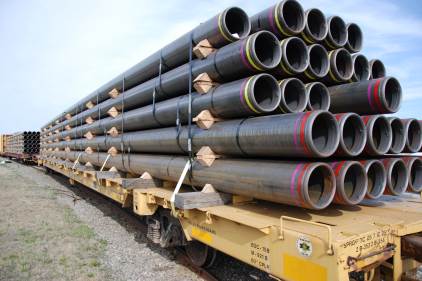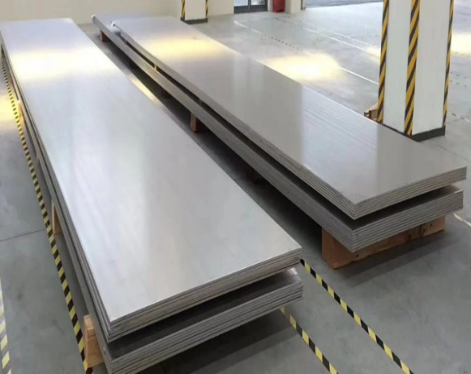I. Introduction
Steel pipe piles are vital in construction. They're made by welding steel plates together. These strong tubes support buildings and bridges. In this guide, we'll explore their manufacturing, uses, and benefits. Let's uncover the importance of pipe piles in modern construction.II. What is Welded Steel Pipe Piles?
Steel tubing piles are structural columns used to support heavy loads in construction projects. They are typically installed into the ground to transfer structural loads to deeper, more stable soil layers. These piles are made by welding steel plates together to form cylindrical sections.Welded steel pipe piles come in various sizes and configurations to suit different project requirements. Common configurations include H-piles, pipe piles, and sheet piles. The choice of pile configuration depends on factors such as soil conditions, design loads, and construction methods.The welding process used to fabricate steel pipe piles involves joining steel plates using electric resistance welding (ERW) or submerged arc welding (SAW). ERW welding involves passing an electric current through the steel plates, heating them to the point of fusion. SAW welding, on the other hand, uses a flux to shield the weld from atmospheric contamination.
These welded connections ensure the structural integrity and strength of the steel pipe piles. However, proper welding procedures and quality control measures are essential to ensure the reliability of the welds. Inspections and testing are conducted during and after fabrication to verify the quality of the welded connections.
III Types of Welded Steel Pipe Piles
Welded steel pipe piles come in various types to suit different project requirements. The most common types include H-piles, pipe piles, and sheet piles. H-piles are shaped like the letter "H" and are widely used for structural support in deep foundations.Pipe piles consist of cylindrical sections of welded steel pipes and are suitable for both end-bearing and friction applications. Sheet piles are thin, flat sections of steel that are driven into the ground to create retaining walls or barriers.Each type of welded steel pipe pile has unique characteristics and advantages. The choice of pile type depends on factors such as soil conditions, design loads, and construction methods. Understanding the differences between these types is essential for selecting the most suitable pile for a given project.

IV. Manufacturing Process of pipe pilings
The manufacturing process of Welded pipe foundations begins with the preparation of steel plates. These plates are then formed into cylindrical shapes through welding. The welding process typically involves electric resistance welding (ERW) or submerged arc welding (SAW).In ERW welding, an electric current passes through the steel plates, heating them and causing them to fuse together. SAW welding, on the other hand, uses a flux to shield the weld from atmospheric contamination while the welding arc melts the steel plates.Once the welding is completed, the welded steel pipe piles undergo quality control measures to ensure their structural integrity. Inspections and testing are conducted during and after fabrication to verify the quality of the welded connections.By following strict manufacturing standards and quality control procedures, welded steel pipe piles are produced to meet the highest industry standards. This ensures that they are reliable and durable for use in various construction projects.
V. Advantages of Welded Steel Pipe Piles
Welded steel pipe columns offer several advantages in construction projects. They provide high strength and durability, capable of withstanding heavy loads and harsh environmental conditions. Additionally, their versatility allows for adaptation to various soil conditions and project requirements.Compared to other types of piles, welded steel pipe piles are cost-effective and efficient to install. Their uniformity in size and quality ensures consistent performance across the project. Moreover, welded connections provide reliable structural integrity, contributing to the overall stability of the construction.
VI. Applications of Welded Steel Pipe Piles
Welded steel tube piles are used in diverse construction projects. They provide stability for buildings and bridges. In marine construction, they support offshore platforms and waterfront structures. Additionally, they play a crucial role in infrastructure projects like retaining walls and shoreline protection. Overall, welded steel pipe piles ensure the stability and durability of various structures in different construction applications.
VII. Design Considerations
When designing welded pipe piles, several factors must be considered. These include the load-bearing capacity of the piles and their structural integrity. Engineers also uate soil conditions and environmental factors to ensure the piles can withstand the forces acting upon them.The design process involves calculating the appropriate pile size and configuration based on project requirements. Factors such as the type of structure being supported and the depth of the foundation play a crucial role in determining the design specifications. Engineers must also adhere to industry standards and regulations to ensure the safety and stability of the piles.
In addition to load-bearing capacity, engineers must consider factors such as corrosion protection and long-term durability. Coatings and corrosion protection measures are applied to metal pipe piles to mitigate the effects of corrosion and extend their service life. By carefully considering these design factors, engineers can create welded steel pipe pile designs that meet the structural requirements of the project while ensuring safety and longevity.
VIII. Installation Techniques
The installation of welded Tubular piles involves several key techniques. Firstly, the site must be prepared, ensuring it is clear of any obstacles and debris. Pile driving equipment, such as pile drivers or vibratory hammers, is then used to drive the piles into the ground.Different methods, such as driving or drilling, may be employed depending on the soil conditions and project requirements. Safety protocols, including wearing appropriate protective gear and ensuring proper equipment operation, are essential during installation.Once installed, the piles are checked for alignment and depth to ensure they meet the project specifications. Proper installation techniques are crucial to ensure the stability and effectiveness of the welded steel pipe piles in supporting the structure.IX. Corrosion Protection and Coatings
Corrosion protection is vital to ensure the longevity and structural integrity of welded steel pipe piles. These piles are often exposed to harsh environmental conditions, including moisture, chemicals, and saltwater, which can accelerate corrosion. To combat this, various corrosion protection methods and coatings are applied to the surface of the piles.One common method of corrosion protection is the application of protective coatings. These coatings act as a barrier between the steel surface of the piles and the surrounding environment, preventing moisture and corrosive substances from reaching the steel. Epoxy, polyethylene, and zinc coatings are among the most widely used coatings for welded steel pipe piles.
Epoxy coatings provide excellent resistance to corrosion and are often applied as a primer or topcoat to steel pipe piles. They form a strong bond with the steel surface, providing long-lasting protection against corrosion. Polyethylene coatings, on the other hand, are thermoplastic coatings that offer superior resistance to abrasion and impact, making them suitable for use in marine environments or areas with high levels of abrasion.
Zinc coatings, such as hot-dip galvanizing, involve immersing the steel pipe piles in molten zinc, creating a protective layer that acts as a sacrificial anode. This sacrificial layer corrodes instead of the underlying steel, providing an additional level of protection against corrosion. Additionally, zinc coatings can self-heal minor scratches or abrasions, further enhancing their corrosion resistance.
In addition to protective coatings, cathodic protection systems may also be employed to mitigate corrosion in welded steel pipe piles. Cathodic protection involves applying a low-voltage electrical current to the steel surface, which suppresses the electrochemical reactions that cause corrosion. This method is particularly effective in environments where coatings may be prone to damage or degradation.
Regular maintenance and inspections are essential to ensure the continued effectiveness of corrosion protection measures. Inspections should be conducted periodically to check for any signs of damage or deterioration to the coatings. Any issues identified during inspections should be addressed promptly to prevent further corrosion and ensure the long-term performance of welded steel pipe piles in supporting structures.

X. Quality Assurance and Testing
Quality assurance is paramount in ensuring the reliability of welded pipe piles. Inspections are conducted throughout the manufacturing process to verify weld quality and steel plate integrity. Non-destructive testing methods, such as ultrasonic testing, are utilized to detect any defects or flaws in the welds.Additionally, further testing is carried out on the fabricated steel tubing piles to assess their structural integrity and load-bearing capacity. Load testing determines the maximum load that the piles can withstand without failure, providing crucial data for design and construction purposes. Field tests are also conducted to uate the performance of the piles under real-world conditions, ensuring they meet the specified requirements.
Regular inspections and maintenance play a crucial role in ensuring the ongoing reliability and effectiveness of welded steel pipe piles. These inspections help to identify any issues or concerns early on, allowing for prompt corrective action to be taken. By adhering to strict quality assurance protocols and conducting thorough testing, welded steel pipe piles can be ensured to meet the highest standards of quality and performance in construction projects.









